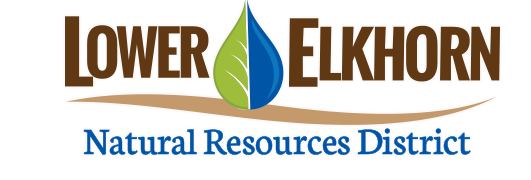One of the responsibilities of the NRDs is the development, management, utilization, and conservation of groundwater. The Lower Elkhorn Natural Resources District (LENRD) monitors the quality and quantity of our groundwater annually. This monitoring program has provided evidence that nitrate concentrations are continuing to increase in some areas. Most recently, the data indicates elevated concentrations of nitrate in portions of Cuming, Colfax, and Dodge Counties, reaching levels that could pose health threats to humans and the environment. It’s during these times when the LENRD board members are put in tough situations, dealing with resources that are shared among all citizens.
At their monthly committee meeting, the LENRD board of directors discussed a proposed resolution that would reaffirm their commitment to water quality management.
Mike Sousek, LENRD General Manager, said, “This resolution reaffirms the board’s commitment to the management of our natural resources and the importance of local control. We are accountable for carrying out the responsibilities given to us by the Legislature.”
State Senator Tim Gragert of Creighton, representing District 40, addressed the board about the resolution and his personal commitment to the protection of our natural resources. Senator Gragert said, “Water is the most important resource we have on this planet, it’s even more important than oil. This resolution is an acknowledgement to the citizens of this district that you’re committed to protecting our natural resources. We are fortunate to have this unique NRD system in Nebraska and I support local control 100%.”
He continued, “By increasing healthy soils, we can increase the quality of our water. Soil health is a win, win, win - a win for producers, a win for consumers, and a win for the environment.” He added, “We have a nitrate problem. We are past the point of being proactive, we are now in the reactive mode.”
Senator Gragert presented his own resolution at the meeting. He said, “I support your resolution and I hope it gets passed. I want to work with you guys, but I will take this resolution to the Legislature myself, if I have to.”
A high concentration of nitrate in drinking water is being linked to adverse health risks, such as: colorectal cancer, thyroid cancer, stomach and kidney cancer, ovarian cancer, non-Hodgkin’s lymphoma, Alzheimer’s, Diabetes, and Parkinson’s Disease.
Birth defects in Nebraska are on the rise, and within the LENRD evidence indicates that these health implications are increasing at a faster rate than the rest of the state. Health researchers are also gaining additional insight on the potential link between nitrate contamination in drinking water and Nebraska’s high rate of pediatric cancer. A study out of the University of Nebraska Medical Center has found that counties with groundwater nitrate concentrations between 2.1 and 5 mg/L have higher incidence of pediatric brain cancer, leukemia, and lymphoma.
The LENRD has evidence of multiple townships within its boundaries with average concentrations of nitrate over 10 ppm.
Sousek said, “As the growing body of science on the potential risks expand, the discovery of areas with elevated concentrations of nitrate becomes even more concerning. The long-term implications demand our attention.”
He continued, “This resolution simply states that we’re here to protect our natural resources and we’re up for the challenges ahead. We care about local control, we care about water quality, we care about human health.”
To learn more about the 12 responsibilities of Nebraska’s NRDs and how your local district can work with you and your community to protect your natural resources, visit lenrd.org and sign up for our monthly emails. The next board of directors meeting will be Thursday, August 26th at the LENRD office in Norfolk at 7:30 p.m. and on Facebook Live.















